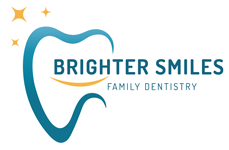
For many, a trip to the dentist can stir up anxiety—those unfamiliar sounds, the clinical atmosphere, and the uncertainty of what will happen next can be unsettling.
But when you know what to expect and have dental procedures explained clearly, these visits can become much less intimidating and more manageable.
At Brighter Smiles Family Dentistry, we believe that being informed about common dental procedures can help you feel more comfortable and confident in your dental care decisions. In this guide, we will demystify various dental treatments, from routine fillings to more complex root canals, to help you understand their importance and benefits.
Table of Contents:
Why Understanding Common Dental Procedures is Important
Knowing what to expect during dental visits can make a big difference.
This knowledge not only helps in maintaining a healthy smile but also ensures you get personalized care that suits your needs. At Brighter Smiles Family Dentistry, we’re here to support you every step of the way.
1. Regular Exams and Cleanings
Frequent visits to the dentist play a crucial role in preserving optimal oral hygiene. These appointments enable your dentist to spot early signs of issues and address them before they escalate, keeping your teeth and gums in excellent condition. During these visits, having dental procedures explained can help you understand their importance and benefits.
- 1
When you come in for a cleaning, the dental hygienist will start by removing any plaque and tartar buildup that daily brushing might miss. This step is essential for avoiding cavities and gum disease.
- 2
Following this, your teeth will be polished to remove surface stains, resulting in a brighter, cleaner smile.
- 3
A fluoride treatment may also be applied to reinforce your teeth against decay.
Brighter Smiles Family Dentistry is committed to ensuring you have a healthy, radiant smile. Through regular check-ups and cleanings, we help you maintain top-notch oral health.
2. Fillings
Fillings are a standard method to repair teeth compromised by decay or injury. They help rebuild the tooth’s shape and function, reducing the risk of further damage and easing any pain.
There are several types of dental fillings, each offering unique benefits:
The Filling Process:
- 1
Assessment: Your dentist will examine the affected tooth and take X-rays if necessary.
- 2
Numbing: Local anesthesia is applied to numb the area, ensuring you feel minimal discomfort during the procedure.
- 3
Decay Removal: The dentist removes the decayed portion of the tooth.
- 4
Filling Placement: The chosen filling material is placed in the cavity, shaped, and hardened.
- 5
Polishing: The filling is polished to ensure a smooth surface that matches the rest of your tooth.
Is It Painful?
Thanks to modern dentistry techniques and local anesthesia, getting a filling is generally not painful. You might feel some pressure during the procedure, but the anesthesia keeps you comfortable.
3. Crowns
Dental crowns are coverings placed over weakened or decayed teeth to return them to their normal shape, size, and function. They are typically used when a tooth is too compromised for a filling to work, or after a root canal to shield the tooth. Understanding this dental treatment can help you make informed decisions about your oral health.
Procedure for Getting a Crown:
- 1
Dental Check-Up: The dentist will look at the tooth and might take X-rays to understand the extent of any damage.
- 2
Tooth Shaping: The dentist reshapes your tooth, ensuring the crown will fit snugly. This process may require removing a portion of the tooth.
- 3
Creating a Model: A detailed model of your prepared tooth and the surrounding area is made to ensure the new crown fits perfectly.
- 4
Temporary Protection: While waiting for the permanent crown, a temporary one is placed on your tooth to protect it.
- 5
Placing the Permanent Crown: After your custom crown is crafted, it is placed onto the tooth, adjusted for a perfect fit, and securely attached using dental cement.
Types of Dental Crowns:
Crowns help restore the tooth’s function and appearance, providing a durable solution for damaged teeth. At Brighter Smiles Family Dentistry, we offer a variety of crown options to meet your specific needs and ensure your smile stays strong and healthy.
4. Root Canal Therapy
Root canal therapy involves treating a tooth with an infected or damaged inner pulp, which houses the nerves and blood vessels. This procedure is essential when the infection penetrates the tooth’s core, leading to pain and the risk of further issues if left untreated.
Steps in a Root Canal Procedure:
- 1
Evaluation and Anesthesia: The dentist checks the tooth, takes X-rays to understand the infection, and administers local anesthesia to numb the area for a painless experience.
- 2
Opening the Tooth: A small hole is created to access the tooth’s inner pulp.
- 3
Cleaning the Infection: The infected pulp is carefully removed, and the inside of the tooth is thoroughly cleaned and shaped to prepare for filling.
- 4
Filling the Space: The cleaned canals are filled with a rubbery substance called gutta-percha to seal them and prevent future infections.
- 5
Sealing and Crowning: The tooth is sealed, and often a crown is added to restore its function and appearance.
Why Root Canal Therapy is Important:
5. Extractions
Removing a tooth can sometimes be necessary to protect your oral health. Teeth may need to be taken out due to extensive decay, significant damage, or overcrowding. Wisdom teeth are frequently removed to avoid potential issues down the line.
The Tooth Extraction Process:
- 1
Evaluation and Planning: The dentist conducts a thorough examination and takes X-rays to devise a strategy for the extraction.
- 2
Numbing the Area: To ensure comfort, local anesthesia is administered to the area around the tooth.
- 3
Tooth Removal: Using specialized instruments, the dentist carefully loosens and extracts the tooth from its socket.
- 4
Aftercare Guidance: Gauze is applied to the extraction site to manage bleeding, and you will receive instructions on how to care for the area at home to promote healing.
Aftercare Tips:
By adhering to these recovery tips, you can ensure a swift and comfortable healing process after your tooth extraction. At Brighter Smiles Family Dentistry, we are dedicated to making sure your recovery is smooth and offering customized aftercare advice.
6. Veneers
Veneers are slender coverings crafted from either porcelain or composite resin. These are uniquely designed to fit over the front portion of your teeth. Their primary role is to enhance your smile’s appearance by addressing various cosmetic concerns.
Cosmetic Uses of Veneers:
The Veneer Procedure:
- 1
Assessment and Planning: The dentist assesses your teeth and discusses the desired cosmetic outcome.
- 2
Tooth Preparation: A small portion of enamel is carefully removed from the tooth surface to allow for veneer placement.
- 3
Taking Molds: Detailed molds of your teeth are created to design custom-fit veneers.
- 4
Veneer Attachment: The custom veneers are securely attached to your teeth using a specialized bonding agent.
Veneers offer several benefits, including enhancing the appearance of your smile and providing a natural tooth look. They are stain-resistant, durable, and long-lasting. Additionally, the procedure requires minimal removal of the tooth structure, making it a conservative cosmetic option.
7. Bonding
Dental bonding uses a tooth-colored resin applied directly to the tooth, which is then hardened with a special light. This method is useful for fixing teeth that are decayed, chipped, cracked, or stained. Unlike veneers, which are custom-made shells that cover the front surface of teeth, bonding involves molding the resin onto the tooth for a quicker, less invasive fix.
Applications of Bonding:
The Bonding Procedure:
- 1
Minimal Prep Work: Typically requires little preparation, and anesthesia is often not needed unless treating decay.
- 2
Preparing the Surface: The dentist gently abrades the tooth’s surface and applies a special liquid to enhance the bonding process.
- 3
Resin Application: A tooth-colored resin is placed onto the tooth, then shaped and smoothed to achieve the desired look.
- 4
Curing Process: The resin is hardened using a special light.
- 5
Finishing: The bonded area is trimmed, shaped, and polished to match the surrounding teeth.
Bonding provides several advantages, such as being a quick and cost-effective solution. It is minimally invasive, enhances the appearance of teeth, can be completed in one visit, and preserves most of the natural tooth structure.
8. Dentures
Dentures are removable devices used to replace lost teeth and surrounding tissue. They are designed to restore your smile and improve functions like chewing and speaking.
Types of Dentures:
The Denture Fitting Process:
- 1
Initial Consultation: Your dentist examines your mouth and discusses the best denture options for you.
- 2
Impressions and Measurements: Molds of your gums and measurements of your jaw are taken to create dentures that fit comfortably.
- 3
Trial Denture: A trial version is made to check the fit, shape, and color.
- 4
Final Denture: Adjustments are made based on the trial version, and the final dentures are crafted and fitted.
Care Tips for Dentures:
Dentures provide many advantages, including the restoration of your smile and better chewing and speaking abilities. They are designed for a comfortable fit and can be easily maintained with proper care.
9. Braces and Invisalign
Braces and Invisalign are both popular choices for teeth straightening, each with their own distinct advantages and characteristics.
Applications of Braces and Invisalign:
The Braces and Invisalign Process:
- 1
Initial Consultation: Your orthodontist examines your teeth and discusses your treatment goals.
- 2
Treatment Planning: Your dentist will take detailed molds and images of your teeth to develop a personalized treatment strategy.
- 3
Fitting Braces or Aligners: Traditional braces involve attaching metal brackets and wires to your teeth. For Invisalign, you will be provided with clear, tailor-made aligners.
- 4
Regular Adjustments and Follow-Ups: Braces require periodic adjustments by your orthodontist, while Invisalign involves switching to a new set of aligners every 1-2 weeks.
- 5
Completion and Retention: After the treatment is complete, a retainer is often recommended to maintain the new position of your teeth.
Traditional braces are very effective for complex dental corrections but are quite visible and may cause some discomfort. Conversely, Invisalign aligners offer a more discreet and comfortable option, being nearly invisible and removable for meals and cleaning. However, they may not be ideal for more severe dental issues.
10. Implants and Bridges
Dental implants and bridges are two effective methods for replacing lost teeth, each with its own benefits and features.
Uses for Implants and Bridges:
The Implant Procedure:
- 1
Consultation and Planning: Dentist assesses dental health and bone structure to determine suitability.
- 2
Implant Placement: Titanium post is surgically inserted into the jawbone.
- 3
Healing and Osseointegration: Several months for the implant to fuse with the jawbone.
- 4
Abutment Placement: Connector attached to the implant.
- 5
Crown Attachment: Custom-made crown is affixed to the abutment.
The Bridge Procedure:
- 1
Consultation and Planning: Evaluation of teeth and discussion of bridge options.
- 2
Teeth Preparation: Adjacent teeth are reshaped to fit crowns.
- 3
Impression Taking: Molds are made to create a custom bridge.
- 4
Bridge Placement: The custom bridge is fitted and adjusted for comfort.
Dental implants provide a durable solution that looks and functions like natural teeth, helping to maintain the jawbone and prevent bone loss. On the other hand, bridges offer a quicker, non-surgical option that efficiently restores both the function and appearance of your teeth.
11. Fluoride Treatments and Sealants
Fluoride treatments and sealants are preventive measures to protect teeth from decay.
Applications of Fluoride Treatments and Sealants:
The Fluoride Treatment Procedure:
- 1
Preparation: Teeth are cleaned.
- 2
Application: Concentrated fluoride is applied to the teeth.
- 3
Duration: Treatment takes only a few minutes.
The Sealant Procedure:
- 1
Cleaning: Tooth surface is thoroughly cleaned.
- 2
Application: Sealant material is painted onto the enamel.
- 3
Curing: A special light hardens the sealant.
Fluoride treatments help strengthen teeth and remineralize small cavities, offering quick and painless protection. Sealants provide long-lasting cavity prevention, especially beneficial for children’s teeth.
12. Mouthguards and Nightguards
Mouthguards and nightguards are essential dental appliances designed for different protective purposes.
Applications of Mouthguards and Nightguards:
The Benefits of Mouthguards:
The Benefits of Nightguards:
The Mouthguard and Nightguard Process:
- 1
Consultation: Your dentist will assess your requirements and suggest either a sports mouthguard or a nightguard for bruxism.
- 2
Taking Impressions: Molds of your teeth will be created to fabricate a custom-fitted guard.
- 3
Fitting: Once the guard is ready, your dentist will check its fit to ensure it is comfortable and secure.
- 4
Usage Instructions: You will receive guidance on how to properly use and care for your mouthguard or nightguard.
Using mouthguards is crucial for protecting your teeth during sports activities, as they help prevent serious dental injuries. Nightguards are essential for individuals who grind their teeth at night, offering protection from wear and damage while also relieving associated jaw pain and headaches. Custom-fitted guards provide the most effective protection and comfort.
13. Gum Reshaping or Recontouring
This cosmetic dental procedure, also called gum recontouring, aims to enhance your smile by adjusting the shape of your gums.
Uses of Gum Reshaping:
The Gum Reshaping Procedure:
- 1
Assessment and Goal Setting: The dentist examines your gums and talks about your aesthetic aims.
- 2
Preparation: To ensure comfort, local anesthesia is administered.
- 3
Tissue Removal and Contouring: Excess gum tissue is precisely removed or the gum line is contoured using specialized tools like a laser or scalpel.
- 4
Aftercare Guidance: Post-procedure, the dentist will give you detailed instructions to care for your gums, aiding the healing process.
Recovery and Aftercare:
Gum reshaping greatly improves the balance and look of your gum line, enhancing the overall appearance of your smile. The procedure is swift and generally causes only minor discomfort, with most patients recovering within a week. Adhering to aftercare instructions is essential for effective healing and lasting benefits.
14. Oral Cancer Screenings
Getting screened for oral cancer is essential for catching potential issues early. This can make a big difference in how easily and successfully the cancer can be treated.
What Happens During an Oral Cancer Screening?
Key Points:
Regular screenings are a simple yet powerful tool in preventing severe health issues. By catching cancer early, you improve your chances of successful treatment and recovery. These screenings can find problems before they grow, making treatments less invasive and more effective. Regular check-ups give you peace of mind and help keep your mouth healthy.
Choosing the Right Dental Procedures at Brighter Smiles Family Dentistry
Understanding common dental procedures helps you feel more confident and comfortable with your dental care choices. Knowing what to expect can make a big difference in your overall experience.
At Brighter Smiles Family Dentistry in West Des Moines, IA, we are dedicated to providing personalized care tailored to your needs. Whether it’s a routine check-up, a filling, or a root canal, our team is here to support you every step of the way.
Don’t wait to take care of your dental health. Schedule an appointment or consultation with us today! Call (515) 225–2577 or visit our website to book your visit. We look forward to helping you achieve a healthier, brighter smile.

About the Author
Brighter Smiles Family Dentistry, led by Dr. Melani Fulton, upholds a legacy of exceptional dental care in West Des Moines, IA. Dr. Fulton, a University of Iowa College of Dentistry alumna, specializes in family dentistry and orthodontics. She succeeded Dr. Dan Todd in 2021, continuing a tradition of patient-centered, high-quality dentistry. Committed to gentle, modern treatments, Dr. Fulton’s approach is deeply rooted in community values, ensuring every patient feels like family at Brighter Smiles.




